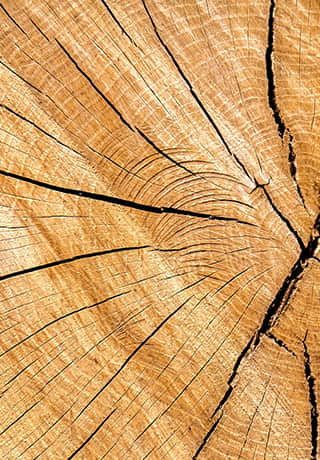Education
Deciding Which Hardwood Flooring Construction is Right for You
Are you confused by terms like “on-grade” and “below-grade”? “Solid” vs. “engineered”? When selecting the construction of your hardwood flooring, there are a few things you should know to make the best decision
for your space.
Solid flooring planks are cut from a single piece of wood and are “solid” all the way through. Since solid wood floors are made of natural wood with its own grain patterns and striations, they can expand and contract more dramatically in high-moisture areas. When exposed to moisture, the wood absorbs the ambient water, and its individual rings swell in different directions based on the cut of wood. If the moisture in a home is outside of the recommended range, this can cause warping, cracking, and splitting in the wood.
Because of this greater variation in response to moisture, solid wood floors need to be nailed down to the subfloor to properly secure them and prevent floor movement. Not all subfloors are strong enough to hold the nails in place: solid wood floors can only be installed over 5/8” plywood (3/4” is preferable and recommended), oriented strand board (OSB), and wood plank subfloors.
In addition, since below-grade (basement) spaces are high-moisture areas, solid wood flooring can only be installed in on-grade (ground level) and above-grade (upstairs) areas. In addition, basement floors are often concrete, which can hold and transfer moisture to the wood floors and which do not allow for a nail-down installation.
Even though solid wood floors are not a good choice for a below-grade space, they are an excellent choice for an on-grade or above-grade area. Solid wood floors can be refinished many times over their lifetime, allowing you to update the finish to keep your floors looking brand new.
Read more about solid wood flooring.
Engineered flooring planks are made from several layers of wood that are cross-layered to even out grain expansion under high-moisture conditions. Engineered flooring will still absorb ambient moisture just like solid wood flooring, but it will expand more evenly and less dramatically than solid flooring.
Engineered flooring can be installed on concrete subfloors, as well as plywood, OSB, and wood plank subfloors. It can be glued down, stapled to the floor, or, for planks 3 inches or wider, installed using a floating method. Because of its higher resistance to moisture-related issues, engineered flooring is a good choice for any grade level.
Read more about engineered hardwood flooring.
Mullican Flooring provides a variety of options in both solid and engineered hardwood flooring to fit your needs. Whichever flooring construction you choose, you will have a wide selection of wood species, colors, widths, and finishes to choose from.
Before installing your new hardwood flooring, be sure to review the installation and warranty sheets for your flooring to ensure proper installation and care. These can be found in your product box or at www.mullicanflooring.com.
Solid flooring planks are cut from a single piece of wood and are “solid” all the way through. Since solid wood floors are made of natural wood with its own grain patterns and striations, they can expand and contract more dramatically in high-moisture areas. When exposed to moisture, the wood absorbs the ambient water, and its individual rings swell in different directions based on the cut of wood. If the moisture in a home is outside of the recommended range, this can cause warping, cracking, and splitting in the wood.
Because of this greater variation in response to moisture, solid wood floors need to be nailed down to the subfloor to properly secure them and prevent floor movement. Not all subfloors are strong enough to hold the nails in place: solid wood floors can only be installed over 5/8” plywood (3/4” is preferable and recommended), oriented strand board (OSB), and wood plank subfloors.
In addition, since below-grade (basement) spaces are high-moisture areas, solid wood flooring can only be installed in on-grade (ground level) and above-grade (upstairs) areas. In addition, basement floors are often concrete, which can hold and transfer moisture to the wood floors and which do not allow for a nail-down installation.
Even though solid wood floors are not a good choice for a below-grade space, they are an excellent choice for an on-grade or above-grade area. Solid wood floors can be refinished many times over their lifetime, allowing you to update the finish to keep your floors looking brand new.
Read more about solid wood flooring.
Engineered flooring planks are made from several layers of wood that are cross-layered to even out grain expansion under high-moisture conditions. Engineered flooring will still absorb ambient moisture just like solid wood flooring, but it will expand more evenly and less dramatically than solid flooring.
Engineered flooring can be installed on concrete subfloors, as well as plywood, OSB, and wood plank subfloors. It can be glued down, stapled to the floor, or, for planks 3 inches or wider, installed using a floating method. Because of its higher resistance to moisture-related issues, engineered flooring is a good choice for any grade level.
Read more about engineered hardwood flooring.
Mullican Flooring provides a variety of options in both solid and engineered hardwood flooring to fit your needs. Whichever flooring construction you choose, you will have a wide selection of wood species, colors, widths, and finishes to choose from.
Before installing your new hardwood flooring, be sure to review the installation and warranty sheets for your flooring to ensure proper installation and care. These can be found in your product box or at www.mullicanflooring.com.



